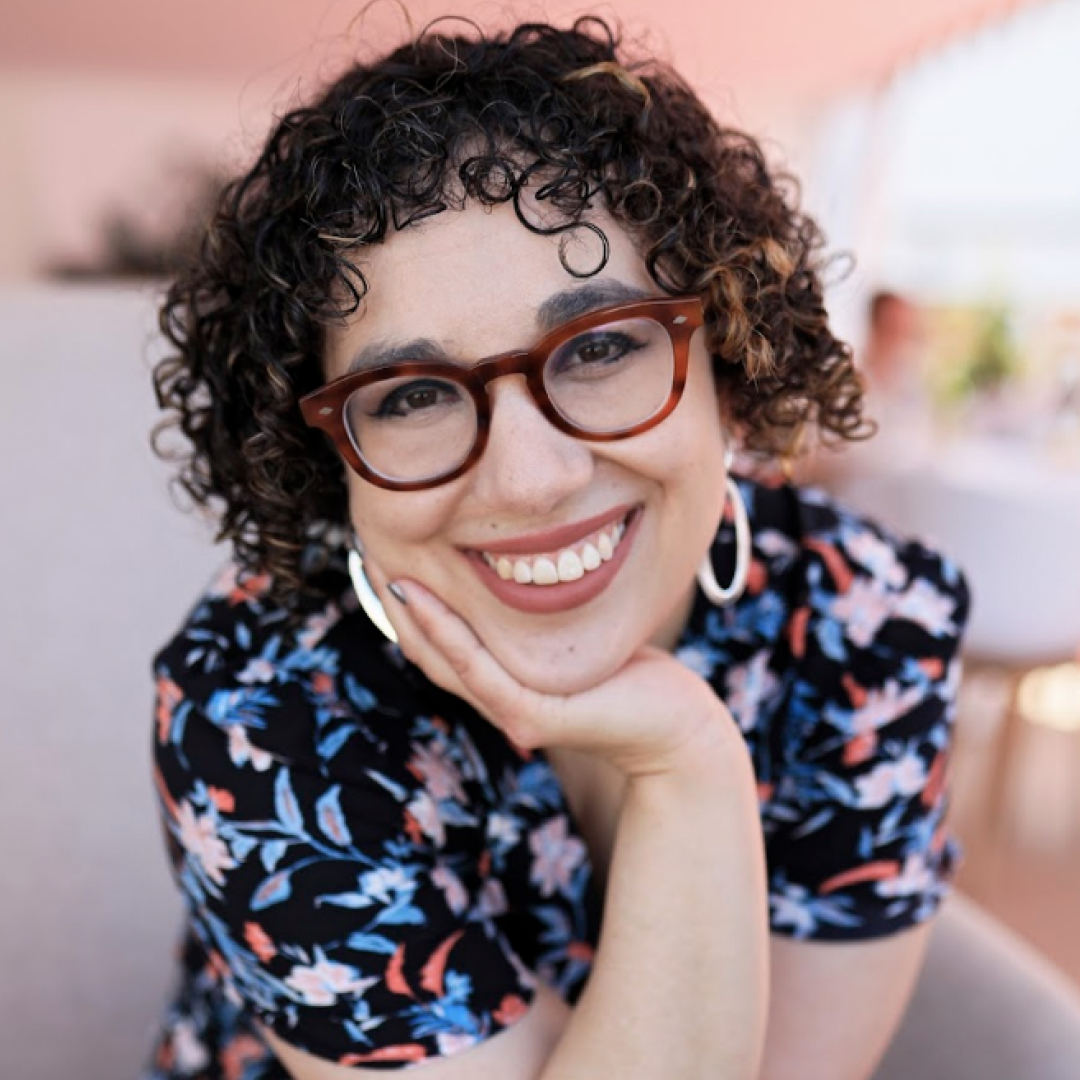Part of 'Wicked’s Magic? Its Cinematographer, Alice Brooks
Brooks—one of the few women in the field working on a massive production like this— had an extensive process for creating an Oz like movie audiences have never seen before.
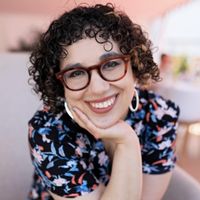
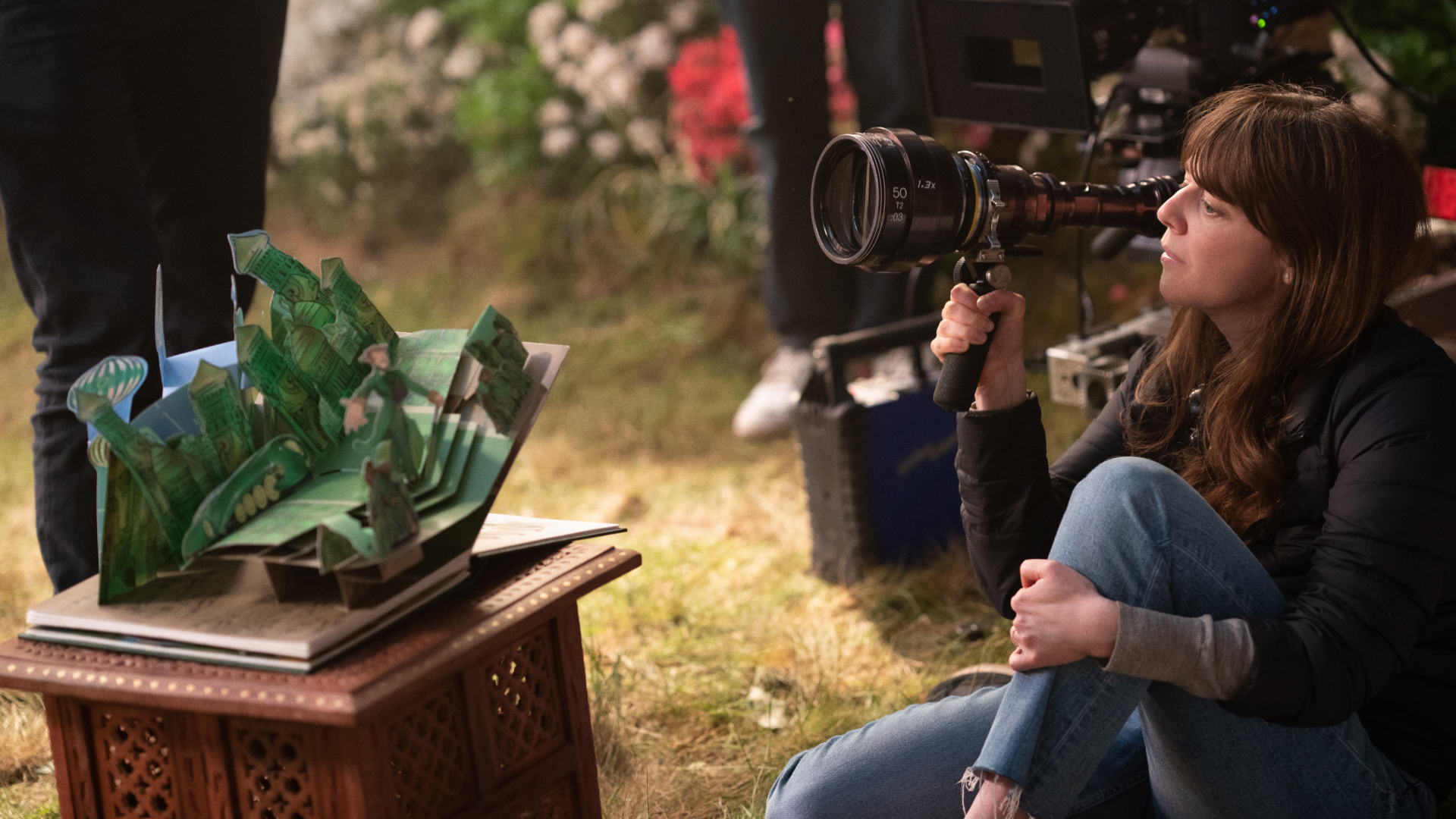
Cinematographer Alice Brooks met director Jon M. Chu at USC film school, where they bonded over their love of musicals. "We think musicals are the greatest genre of all time," she tells Marie Claire during a recent phone call. "They are a full extension of expression."
Now, over 20 years later, Brooks is the director of photography on Wicked, Chu's enormous adaptation of the Broadway phenomenon, starring Cynthia Erivo and Ariana Grande as the legendary enemies-turned-BFFs of Oz. Brooks—who previously shot Chu's In the Heights and 2015’s Jem and the Holograms—was tasked with capturing Wicked’s massive dance numbers, reimagining L. Frank Baum's iconic magical land, and figuring out how best to light pink and green.
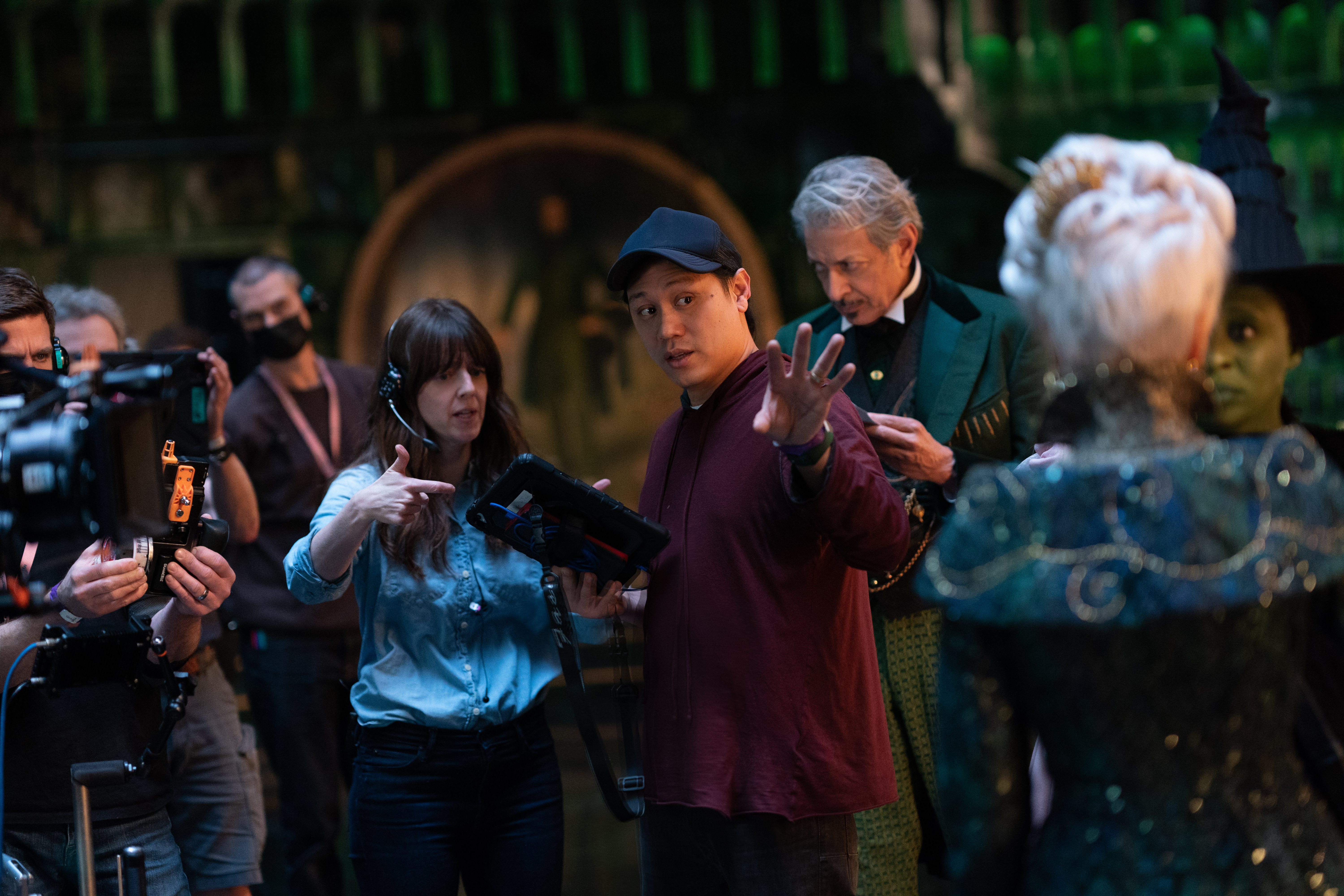
Brooks fell in love with cinematography as a young girl on set. "When I was 15, I told my mom I didn't want to be an actress, I wanted to be a cinematographer," she says.
This also means that Brooks is one of the few women in her profession to work on a production as high profile and large scale as this one, which is on track to shatter several box office records less than a week since its release. Female cinematographers are still underrepresented in the entertainment industry—only three have been ever nominated for an Oscar in their category and none have won. Earlier this month the CEO of the cinematography-focused festival Camerimage suggested that including more women in the field would yield "mediocre film production."
Here, Brooks speaks to what it means for her to be behind the camera on Wicked, working with Erivo and Grande, and that viral "What Is This Feeling?" dance number.
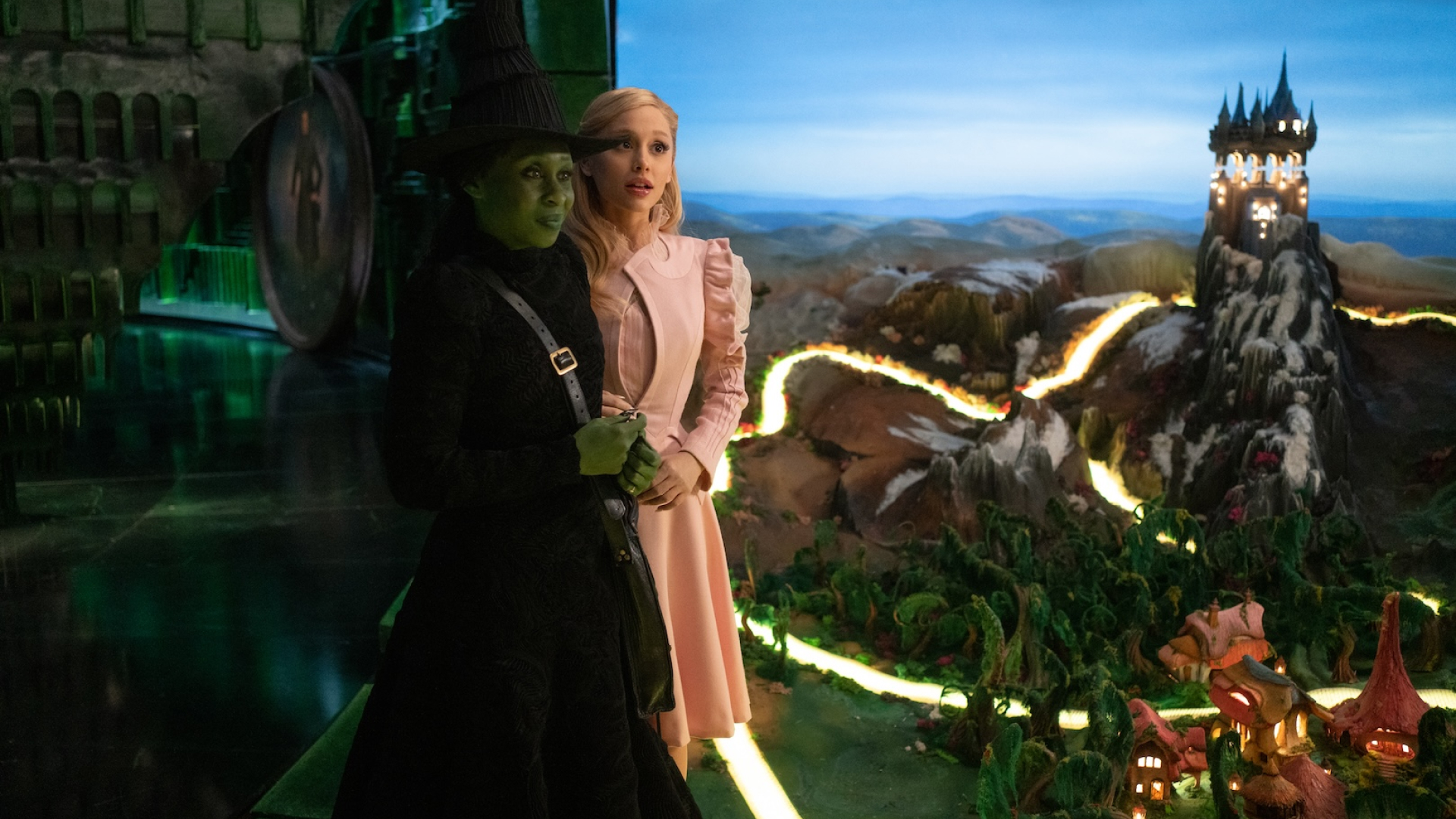
To film Wicked, starring Cynthia Erivo and Ariana Grande, Brooks and director Jon M. Chu got to create "what the 2024 version of technicolor is."
Marie Claire: What made you want to become a cinematographer?
Alice Brooks: I grew up in New York City with two artist parents. My dad was a playwright and my mom was a singer and a dancer, and we didn't have much money. We lived in a one bedroom tenement apartment and there was a bathtub in the kitchen. I made a movie called Tick, Tick... Boom! [Our apartment] was very similar to Jonathan Larson's apartment in that movie. There was always art around us. I could stay up as late as I wanted to watch a movie with my dad as long as I could do two things: Identify the act break in a movie, and also I needed to be able to read the opening credits. So I learned to read at a super young age.
When I was five, my parents put me into child acting to help support the family, and I always loved the camera guys. Then when I was 10, we moved to Los Angeles because my sister's career was sort of growing and she was always on a TV series. My parents would pick me up after school, and I'd go sit in the soundstage in the dark and watch the lighting guys start to light. I knew there was something about it that was special. When I was 15, I told my mom I didn't want to be an actress, I wanted to be a cinematographer. She said she knew. When it was time to go to college, I applied to USC and my mom made me walk my application in and she said to them, “We don't have money to send her here, but Alice deserves to go here." I got a full scholarship two weeks later.
Get exclusive access to fashion and beauty trends, hot-off-the-press celebrity news, and more.
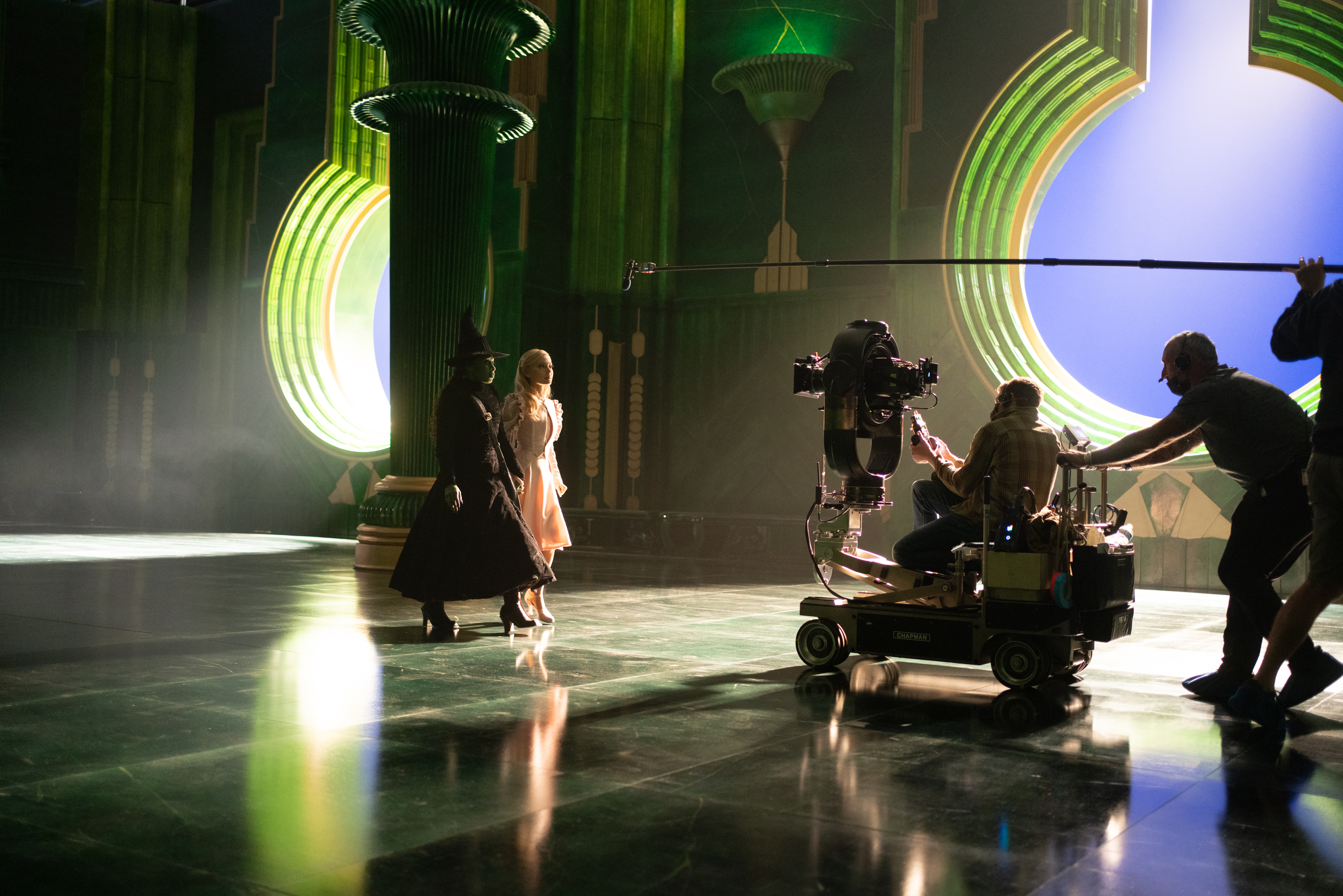
Brooks describes Wicked as the "greatest love story" of female friendship. "I literally get to be the female lens through which we watch this film."
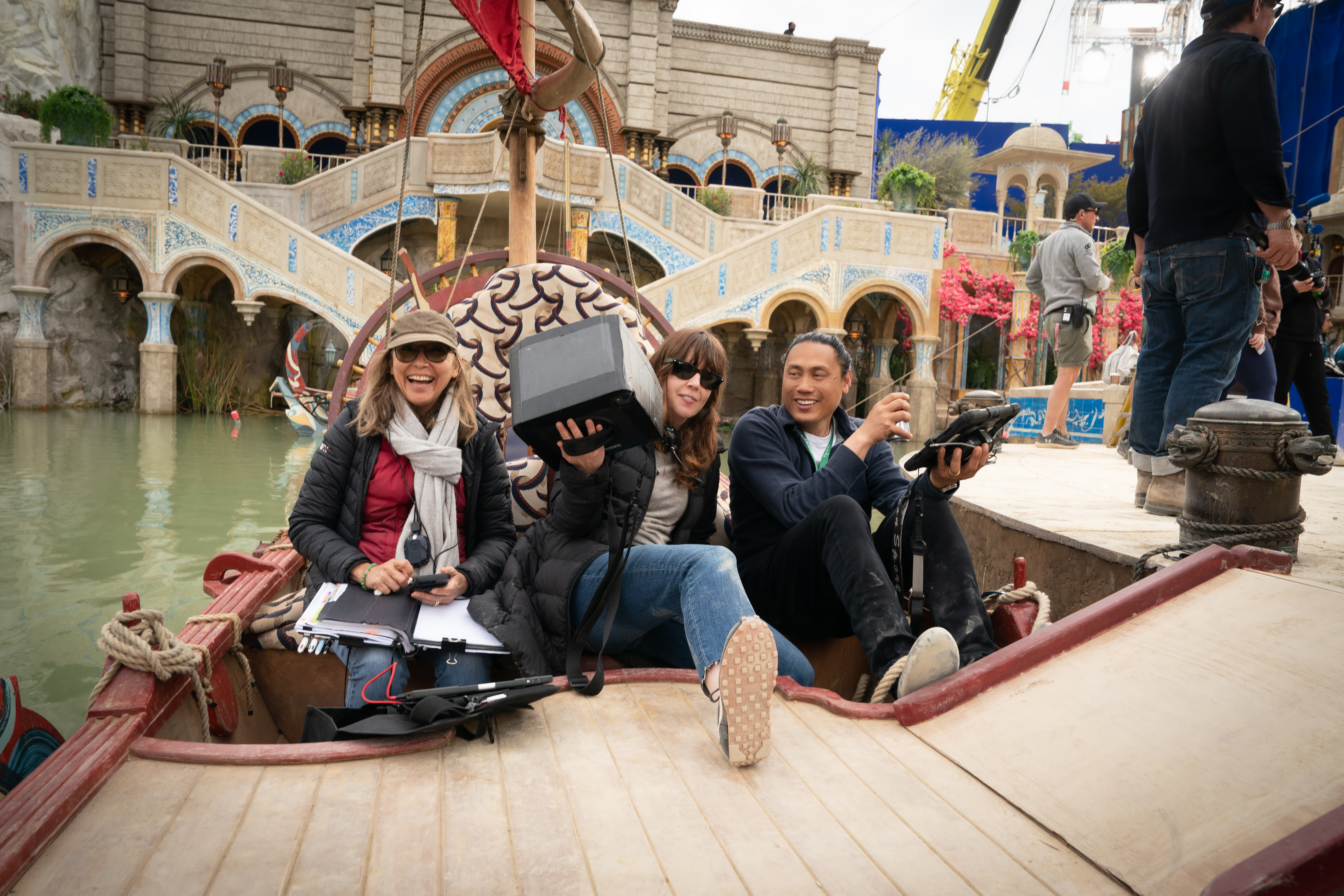
Brooks (center) rides a Shiz University boat with Chu (right) and a crew member.
What was your reaction when Jon asked you to come on board to Wicked?
AB: We were in the middle of post [production] on In The Heights when I found out. He called me and he said, "I know what we're doing next. It's Wicked." So it was very quick. It was very early on. There's only been two movies in my life I haven't interviewed for, In The Heights and Wicked.
Pink and green are so integral to the iconography of Wicked, how did you approach that?
AB: We had 18 weeks of prep on the ground in London, and it became a consistent process of color testing. We wanted Oz to look like no other Oz anyone's ever seen before, and actually our movie not to look like anything anyone's seen before. We're definitely not a movie that's on trend. So I started doing color tests because we're like, “Okay, we get to create what our version of technicolor is. What the 2024 version of technicolor is.” We decided it should be Old Hollywood romantic movie but at the same time contemporary. But then I needed to light it, because with color, if I light green with pink, then suddenly the green goes away. And you can see that in certain scenes in the movie, like in "What Is This Feeling?" when the pink light goes on, Elphaba's green disappears. It was figuring out what our version of pink was, purple, red, yellow, orange, green, blue. I had decided we were going to shoot this movie with every color of the rainbow, but they had to be very specific colors.
You mention that you didn't want to do the Oz technicolor of the MGM film, and there have been a lot of online discussions comparing your Oz to that Oz. Can you talk about your overall concept for the color and seeing it compared to technicolor?
AB: I read all the L. Frank Baum original books, and every single paragraph has this incredibly rich, poetic, romantic color description and color means something in Oz. So instead of just copying what the '39 version did, we took the inspiration from the original source material and started to develop it with intuition and feeling and emotion and all making sure it was driving the story that we were telling in Wicked.
I had this idea that the sun would rise for Glinda and set for Elphaba.
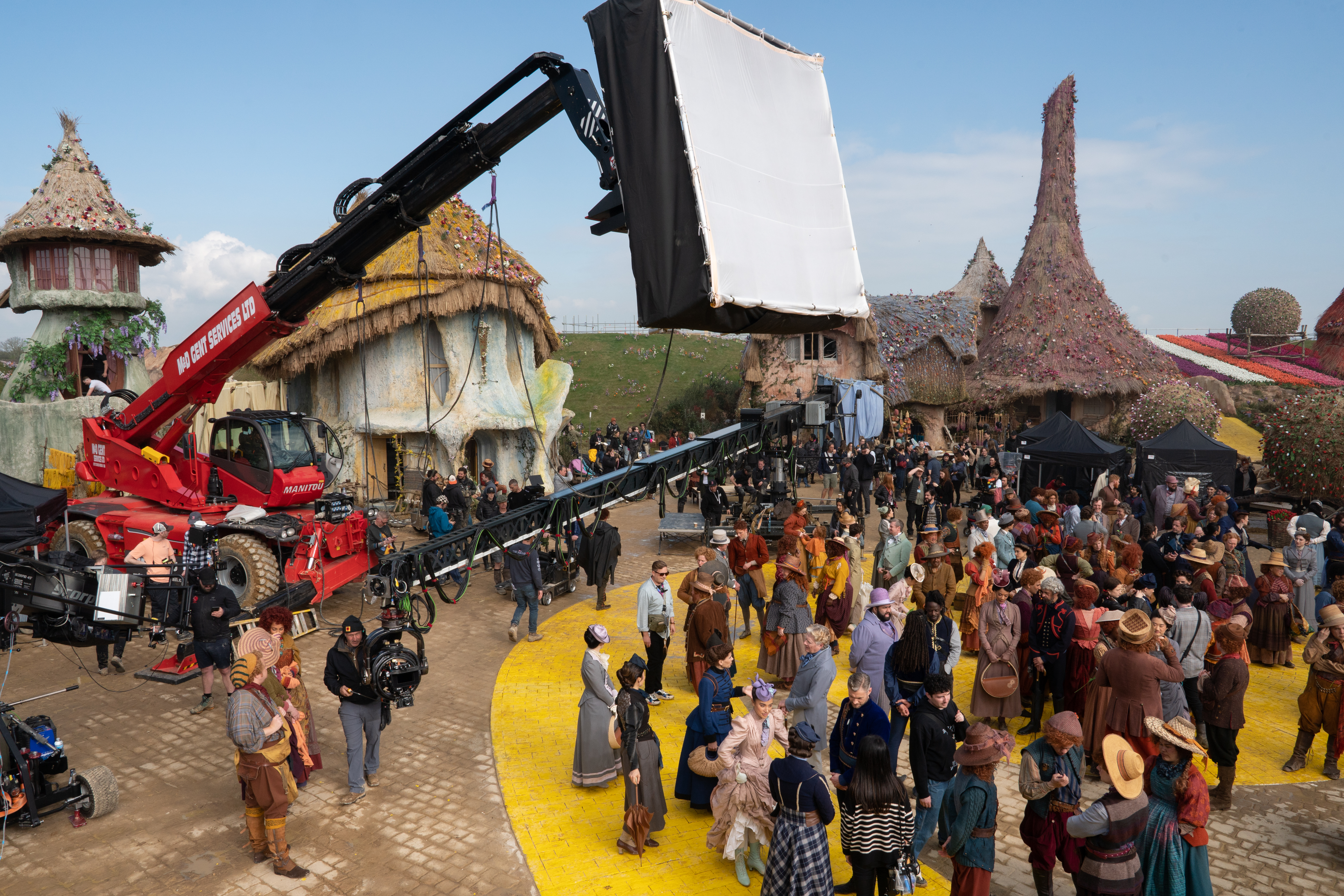
One of the production's SoftSun lights is used to light a Munchkinland set.
You're working on these massive sets, some of which were built outside. How did you think about lighting those?
AB: We had 17 interior sets built on stages. Just massive sets. Then we had four exterior sets, only. We had the train station set, we had the Munchkinland set, and then we had the Shiz and the Emerald City set. So those sets are meant to look like beautiful Ozian sunlight. But we're in London which is always gray. So we needed to bring in lights. We used something called SoftSuns, and there are five in the world. We are using massively huge lights outside to compete with the ambience. So even though we're outside, it's a ridiculously incredible amount of lighting.
What was the most challenging musical sequence?
AB: I think "Wizomania" was a huge challenge because it was the very last thing at the end of our schedule before the [actors'] strike hit. We were at day 145 of our schedule. So we had been shooting already for eight months. We're also in our biggest set, our Emerald City set. It needs to feel the most delightful and joyous and wondrous because Elphaba and Glinda are in Emerald City for the first time, and everything is possible for them. You need to feel that joy so that everything that happens afterwards—the monkey transformation, then the betrayal, then the chase, and then Elphaba in her darkest moment when she hears she's the Wicked Witch of the West—[resonates]. But you've got to feel all that energy and joy. I've known Chris Scott the choreographer for 15 years. So the three of us have really been working for the last 15 years very closely together doing this. So Emerald City, the set construction wasn't complete. It was behind. We were backing up into the strike, so we couldn't push anything. Jon, Chris and I would meet on the weekends. I'd pre-light every weekend, and then after pre-light, we'd just go sit in these construction zones really and try to figure out how we were going to do this on set. Just lyrically figuring out how to move the camera in such a joyous, effervescent way. So that's the one I think I'm most proud of.
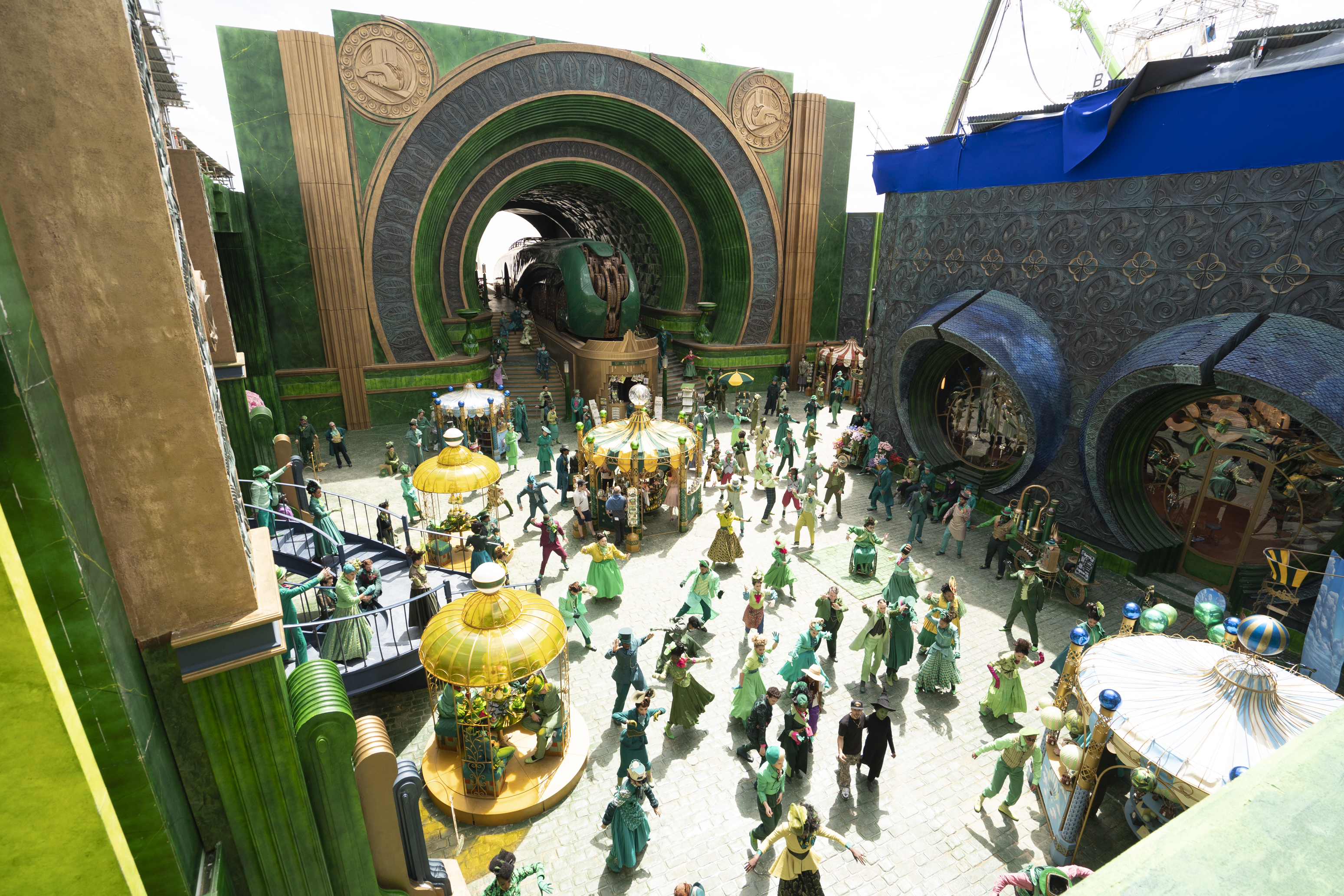
Brooks says she's most proud of the "Wizomania" sequence among all of Wicked's numbers.
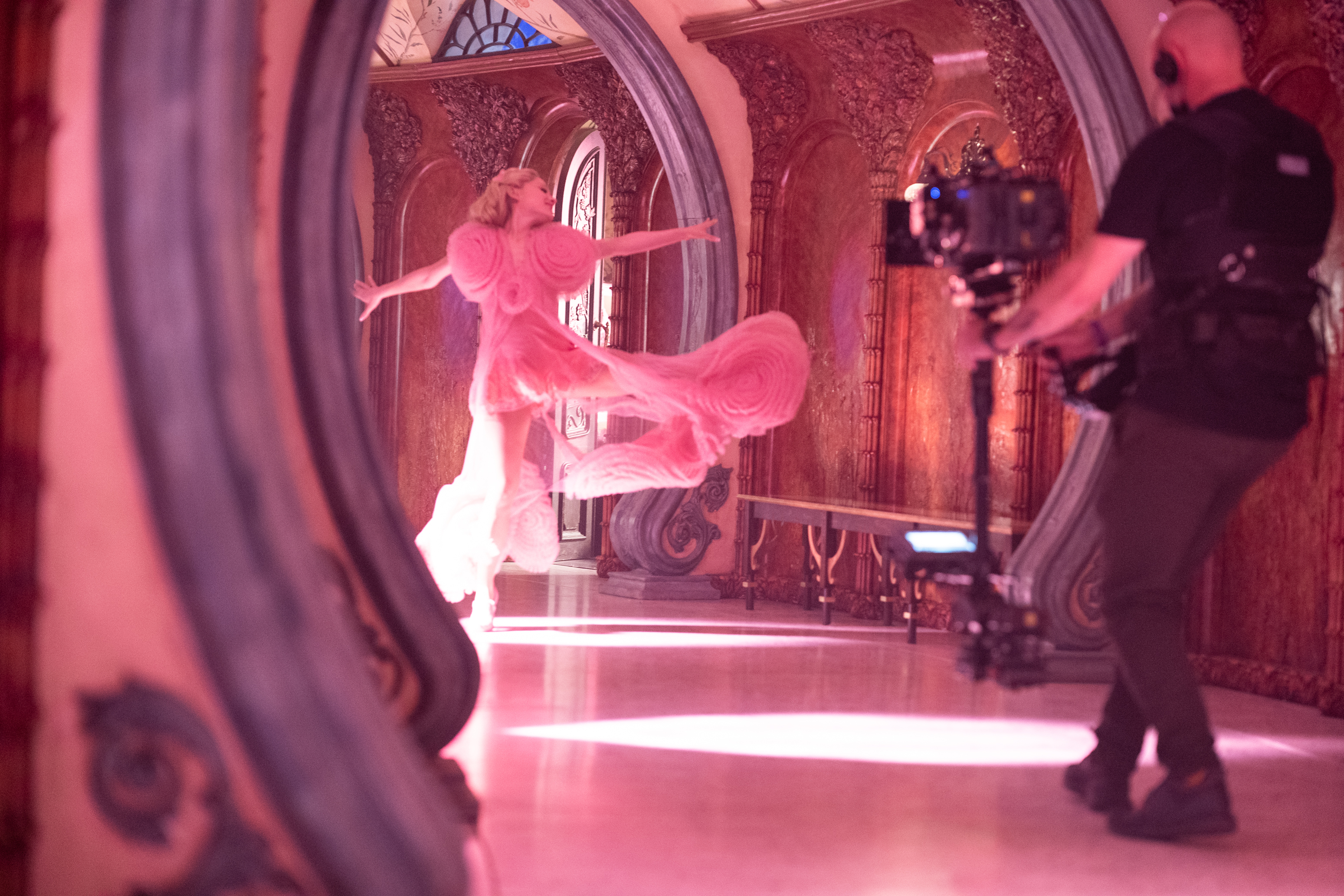
Ariana Grande films a dreamy Glinda dance sequence in a Shiz hallway.
How did your philosophy of shooting Elphaba and Glinda impact your work with Ariana and Cynthia?
AB: I had this idea that the sun would rise for Glinda and set for Elphaba. "Popular" is this one long sunrise that takes place from after the Ozdust pre-dawn to Glinda going up her luggage to a pink sunrise room just filled with pink. That number really sort of evolved. That was our second number we did; it was our second week of shooting. A corridor had been built that we weren't actually using that attached to the dorm room. Suddenly Chris and Ari started working out there and came up with this idea that just extending the music and having Ari dance in the corridor, That wasn't a space we were planning on doing that pink part. Then suddenly it became this one steadicam shot. It was just this beautiful choreography between camera and lighting and Ari and choreography and Jon, where very quickly that all came into existence because we all at that point really trusted each other and knew something special was being conjured up.
Then for Elphaba, she finds her power in the darkness. The idea that Emerald City should become this long sundown scene that lasts an hour where she finds her power as she jumps out of the building and she's free-falling from the sunset at the top into the darkness. She reaches out to her younger self and finds her broom and finds that power to say, "It's me." Cynthia and I had a special relationship through this because, you know, she's green. I saw her looking at a monitor one day, and it was a terrible looking monitor. For some reason, the makeup and hair and costume people's monitors look the worst on set. So I went to her, I'm like, "Don't look at that monitor. Come look at mine if you're going to look at a monitor. But don't worry, I'm going to take care of you." And from that moment on, she said she knew she trusted me. I'm putting her into all these shadows, and she's wearing black and she's green, but yet, she's stunning. I could not imagine lighting someone in this beautiful dark way more than her.
A shot of choreography from "What Is This Feeling?" has gone super viral. What is your take on that?
AB: It's amazing that, out of all of Wicked, that's the moment. It's just a very visually strong frame with so many dancers all hitting their moves exactly perfectly. You've got Ari dead center and sort of a butterfly of people around her. Our camera's just so strong and powerful as well. That's actually the moment when she loses her power to Elphaba because she looks up and she sees Elphaba is the one who has what she wants.
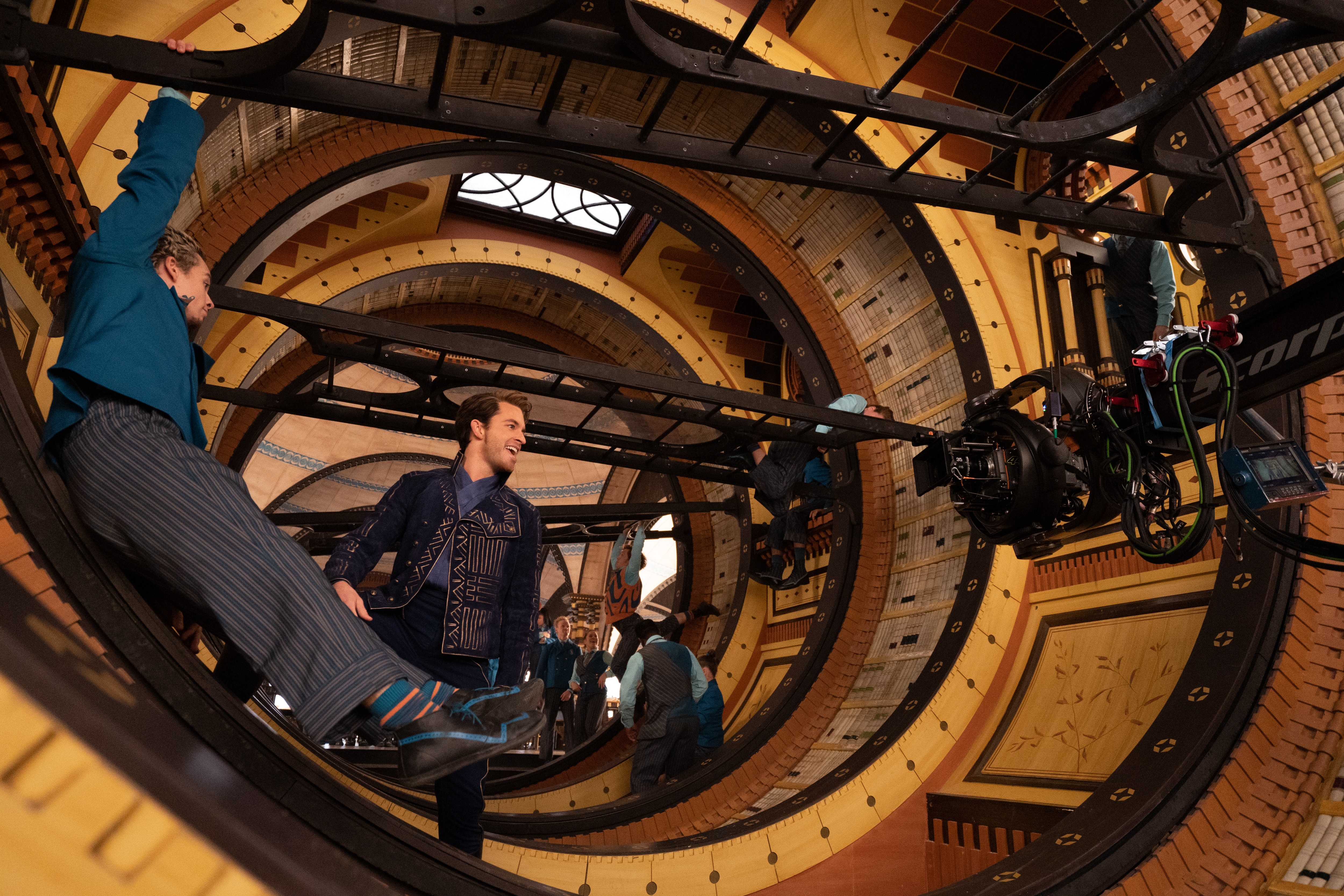
Jonathan Bailey films a Fiyero dance number in one of Wicked's "massive" interior sets.
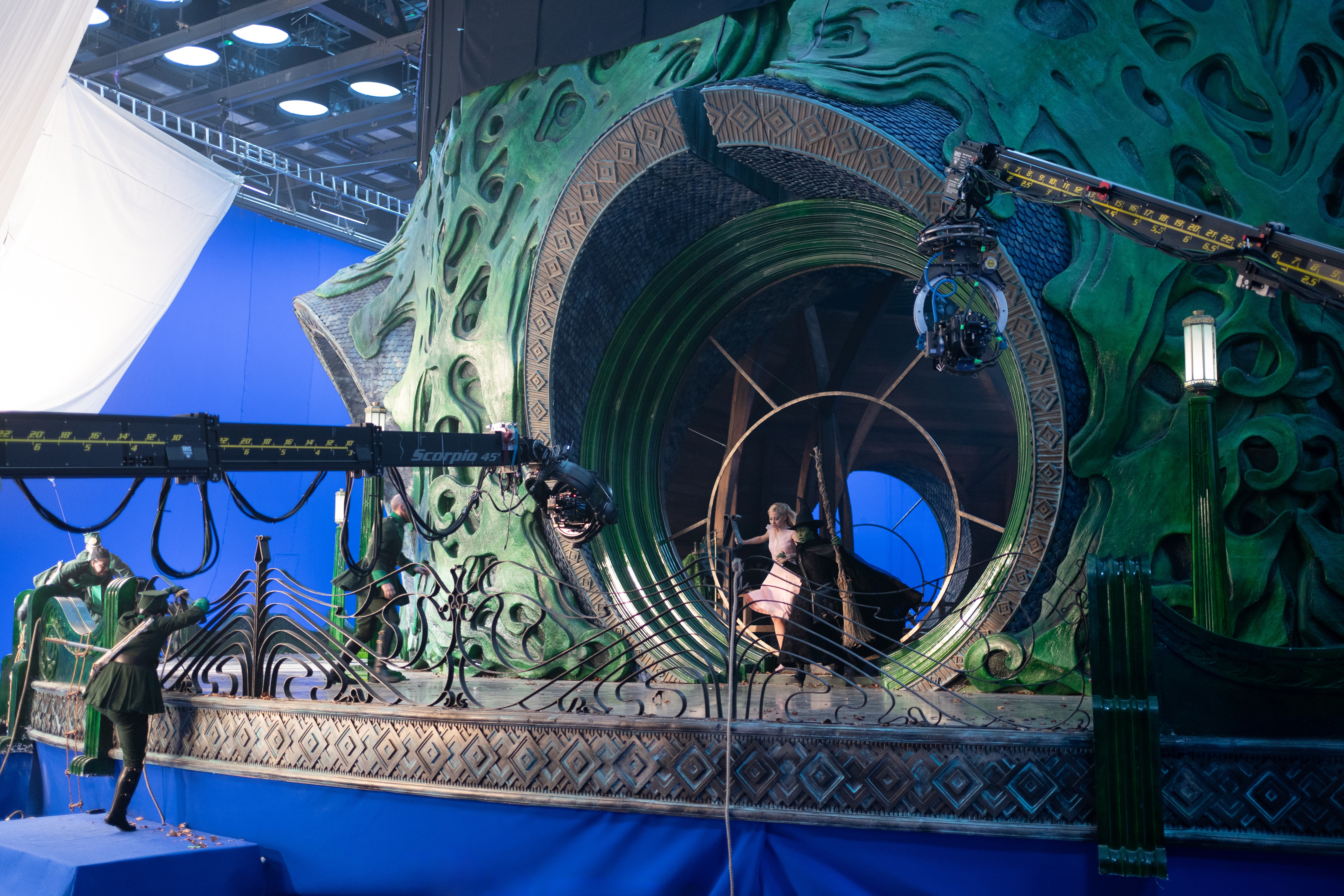
Brooks teases that Wicked Part 2 will be a "darker movie" that's "a complete experience on its own."
What did it mean for you to be telling this story as a female cinematographer?
AB: This is the story of female friendship. When Jon asked me my goal for this movie, I said it was the greatest love story of all time between these two women, these two best friends. I literally get to be the female lens through which we watch this film. When I was 15 and knew I wanted to be a cinematographer, I had no clue that there were so few women cinematographers, and I didn't actually even know until sometime after I got out of school. It didn't dawn on me that that was the reality. I feel so lucky. I also feel incredibly lucky that along this whole journey that I get to see 18-year-old girls who are looking up to me and go, Okay, she is doing this. Not even just 18-year-old girls, women my age, women older than me, come up to me and they get to see that women can be successful on such a massively huge movie. And hopefully more and more people will keep taking risks and choosing women to shoot their movie. I don't even know if it's risks, but just continuing to hire women.
Part 2 is much darker. Can you tease how you approach that?
AB: I can't talk much about it. It is a darker movie. We made two movies, and I think movie one, it feels like a complete experience on its own. And movie two will feel the same. It's exciting.
Esther Zuckerman is a freelance entertainment journalist and critic. Her work appears in the New York Times, GQ, Bloomberg, the Wall Street Journal, the Los Angeles Times, Indiewire, and Time among others. She is the author of three previous books: A Field Guide to Internet Boyfriends: Meme-Worthy Crushes from A to Z (2021), Beyond the Best Dressed: Cultural History of the Most Glamorous, Radical, and Scandalous Oscar Fashion Hardcover (2022), and Falling in Love at the Movies: Rom-Coms from the Screwball Era to Today (2024).
